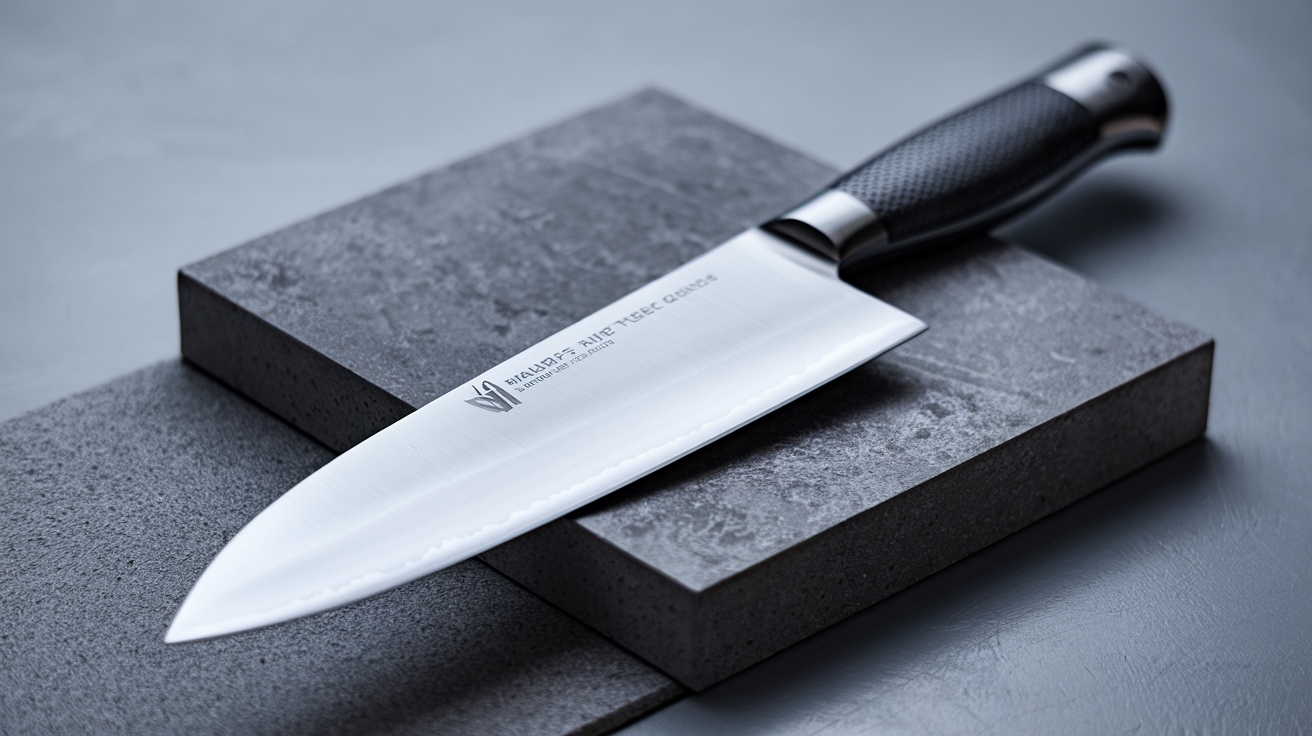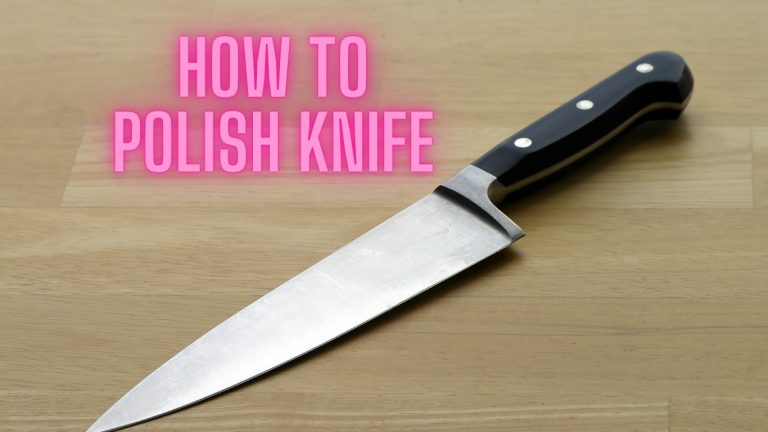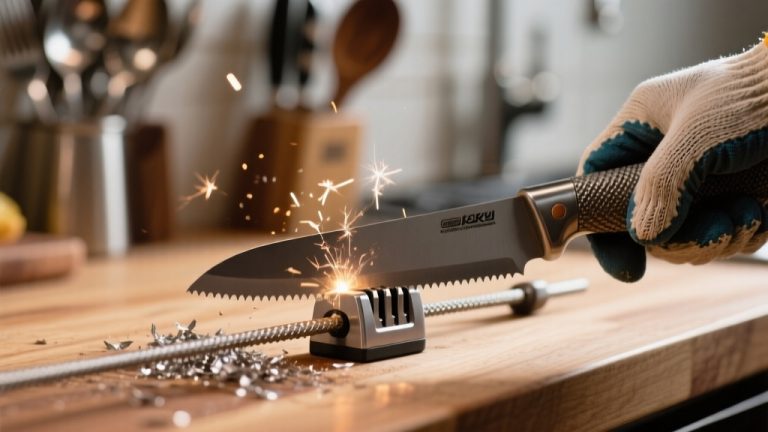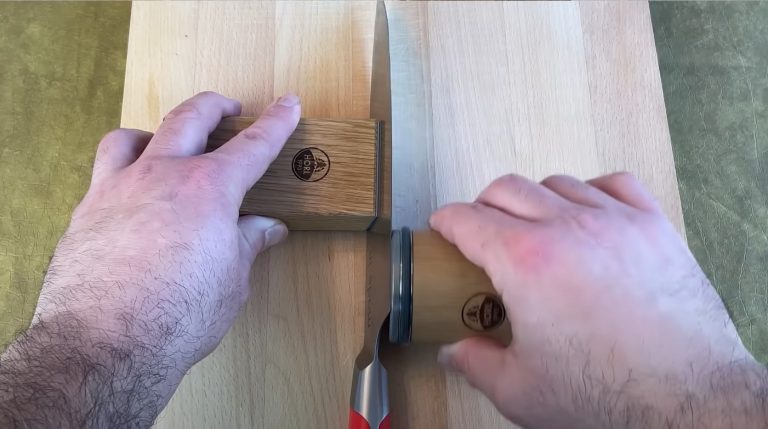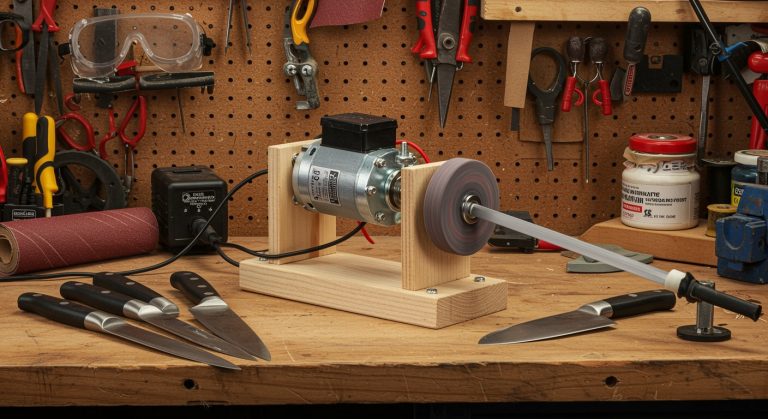Can You Sharpen a Stainless Steel Knife: Unlock the Secret
Yes, you can sharpen a stainless steel knife using various methods. Techniques like whetstones, honing rods, and electric sharpeners are effective. When using a whetstone, maintain a 15-20 degree angle and alternate sides for uniform sharpening.
Honing aligns the edge, while electric sharpeners offer convenience with user-friendly designs. Remember, the blade’s material influences the ideal angle, so adjust based on its intended use. Regular maintenance is key; clean the knife properly and store it safely.
Sharpening not only enhances cutting efficiency but also prolongs the knife’s life, ensuring excellent performance as you explore further techniques.
Key Takeaways
- Yes, stainless steel knives can be sharpened using various methods, including whetstones, honing steels, and electric sharpeners.
- Maintaining a consistent sharpening angle is crucial for maximizing the knife’s cutting efficiency and longevity.
- Regular honing between sharpenings helps maintain sharpness and reduce the frequency of full sharpenings needed.
- Stainless steel knives require specific sharpening techniques due to their unique properties, such as lower edge retention compared to high carbon steel.
- Proper maintenance, including cleaning and storage, enhances the effectiveness of sharpening and prolongs the knife’s lifespan.
The Essentials of Stainless Steel Knives
Stainless steel knives are a popular choice for both home cooks and professional chefs due to their unique blend of properties.
These knives typically exhibit good corrosion resistance, primarily due to their chromium content, which exceeds 12%. This feature means they resist rust and require minimal maintenance. Properly sharpened knives enhance cutting efficiency, making them more effective tools in the kitchen.
While they generally offer lower edge retention compared to high carbon steel knives, the presence of vanadium carbides enhances their ability to maintain sharpness. Edge retention is particularly important for chefs who rely on consistent performance during busy kitchen hours.
Toughness is another critical property; stainless steel knives can handle impacts without chipping, thanks to additives like molybdenum and nickel. Regular visual inspections of the blade can help maintain optimal performance and ensure safety.
Effective Sharpening Methods
When it comes to maintaining the sharpness of your stainless steel knives, employing effective sharpening methods is essential. Here are some common techniques:
| Method | Key Steps |
|---|---|
| Sharpening with Whetstones | Soak the stone, maintain a 15-20 degree angle, alternate sides. |
| Honing with Steel | Position steel vertically, maintain angle, slide blade downwards. |
| Using Electric Sharpeners | Follow instructions, insert knife, check sharpness. |
Each method has its advantages. Whetstones provide precision, honing realigns edges, and electric sharpeners offer convenience. Sharp knives require less force, reducing the risk of accidents.
Importance of Sharpening Angles

Proper sharpening angles are vital for maximizing a knife’s performance and longevity. The angle between the blade and the sharpening tool directly impacts cutting efficiency, durability, and functionality.
Different knives require specific angles tailored to their intended use; for instance, delicate slicing often benefits from lower angles while tougher tasks need higher ones. Additionally, the blade’s material and composition influence the ideal angle.
Understanding the type of steel used in your knife is crucial for selecting the appropriate sharpening angle. Using an incorrect angle can lead to chipping, breaking, or accelerated wear. A general guideline is to start with a 20-degree bevel, adjusting as necessary.
Consistency in maintaining this angle is essential for achieving optimal sharpness, edge retention, and overall blade performance, ensuring your knife remains effective for a longer period.
Essential Sharpening Tools
A variety of sharpening tools is essential for maintaining the performance of stainless steel knives.
Here’s a quick look at three effective options:
- Whetstones: Available in different grits, they offer versatility. Coarse stones (1,000 grit) prepare edges, while finer stones (5,000-6,000 grit) refine them. Make sure you soak or clean them properly for best results.
- Electric Sharpeners: These tools provide ease of use with moderate coarseness and speed control. Look for models with angle guides and safeguards to protect your blades. The Brod and Taylor Professional Stainless Steel Body Knife Sharpener is an excellent option for enhancing cutting performance.
- Manual Sharpeners: Featuring pull-through designs, they’re user-friendly but require careful handling. Many come with preset angles, guaranteeing consistent sharpening while minimizing damage.
Techniques for Sharpening
Maintaining the sharpness of stainless steel knives requires specific techniques that leverage the tools available. You can use whetstones, honing steel, or diamond-based sharpening methods. Here’s a quick overview:
| Technique | Key Points |
|---|---|
| Whetstones | Start with coarse grit; maintain a 15-20° angle. |
| Honing with Steel | Align at 15-20°; slide heel to tip, alternating sides. |
| Diamond Stones | Apply light pressure; effective in 5-10 minutes. |
| Manual Systems | Use preset angles for precision. |
| Mechanized Systems | Fast sharpening with belt grinders. |
Choose your method based on availability and desired results. Each technique requires practice for peak performance, ensuring your stainless steel knives remain sharp and ready for use.
It’s important to note that higher grit finishes on stainless steel may lead to jagged microchips, affecting long-term edge retention.
Maintenance for Longevity
To guarantee your stainless steel knives last, regular maintenance is essential. By following these practices, you can enhance their longevity:
- Clean properly: Hand wash your knives with warm water and mild dish soap. Avoid abrasive cleaners and scrubbers to prevent scratches.
- Store wisely: Use knife blocks, magnetic strips, or blade guards for protection. Confirm knives are dry before storing to prevent moisture damage.
- Sharpen and hone regularly: Sharpen your knives every few months, depending on usage. Honing helps maintain sharpness between sharpenings.
Frequently Asked Questions
Can I Use a Regular Kitchen Knife Sharpener on Stainless Steel Knives?
You can use a regular kitchen knife sharpener on stainless steel knives, but it may not be effective.
The hardness of stainless steel often requires more specialized tools, like diamond-based sharpeners or manual systems with preset angles. Regular sharpeners might demand excessive pressure, risking damage.
For best results, consider diamond stones or mechanized systems, which are designed to handle the unique properties of stainless steel effectively and maintain a sharp edge.
How Often Should I Sharpen My Stainless Steel Knife?
Think of your knife as a trusty steed; the more you ride, the more care it needs.
If you’re an avid home cook, sharpen your knife every 1-2 months. Casual cooks might sharpen every 2-4 months, while occasional users can wait up to 6 months.
Regular honing between sharpenings keeps your edge sharp. Pay attention to cutting performance; if it struggles, it’s time to sharpen.
Always inspect your knife for signs of dullness.
Is It Safe to Sharpen a Knife at Home?
Yes, it’s safe to sharpen a knife at home if you follow essential safety precautions.
Always cut away from your body and secure the knife to prevent slips. Use the right tools, like whetstones or honing rods, and maintain a consistent angle while sharpening.
Wearing cut-resistant gloves and goggles can further protect you.
Regularly inspect your tools for wear and guarantee you’re making slow, controlled movements to minimize accidents.
Can I Use a Honing Steel on Stainless Steel Knives?
Using a honing steel on stainless steel knives is like tuning a finely crafted instrument.
You can absolutely hone your stainless steel knives with various honing steels, including stainless, ceramic, or diamond-coated options.
Just remember to maintain a consistent 15-20 degree angle while drawing the knife along the steel.
This process realigns the blade’s edge, ensuring your knife stays sharp and ready for culinary tasks.
Regular honing keeps your knife performing at its best.
What Are the Signs That My Stainless Steel Knife Needs Sharpening?
You’ll notice your stainless steel knife needs sharpening if you see light reflecting off the edge, indicating dullness.
If it struggles to cut through materials, or if you feel a rough “burr” along the blade, those are clear signs.
Increased effort required for cutting, uneven edge alignment, and slipping instead of slicing are also indicators.
Regular visual and tactile checks will help maintain your knife’s performance and longevity.
Achieve Effortless Precision with Regular Knife Sharpening
Sharpening your stainless steel knife is not just possible; it’s essential for peak performance. By understanding the right techniques and using the appropriate tools, you can maintain a razor-sharp edge that makes cutting effortless.
After all, wouldn’t you want your knife to perform at its best when you need it most? Regular maintenance guarantees longevity, allowing you to enjoy the benefits of your investment for years to come. Embrace the art of sharpening for superior results.

